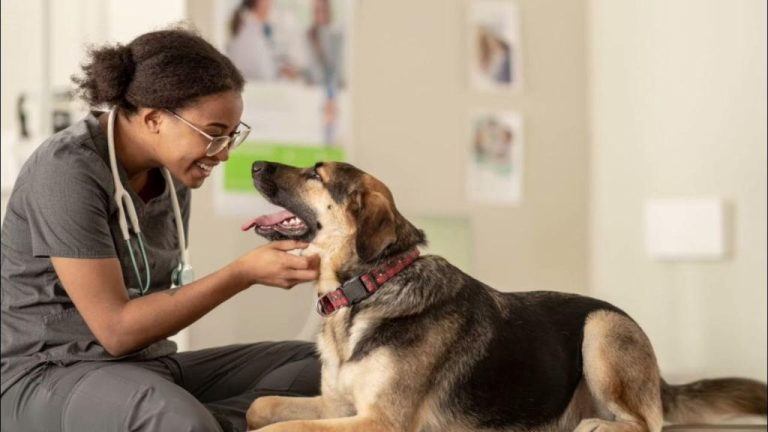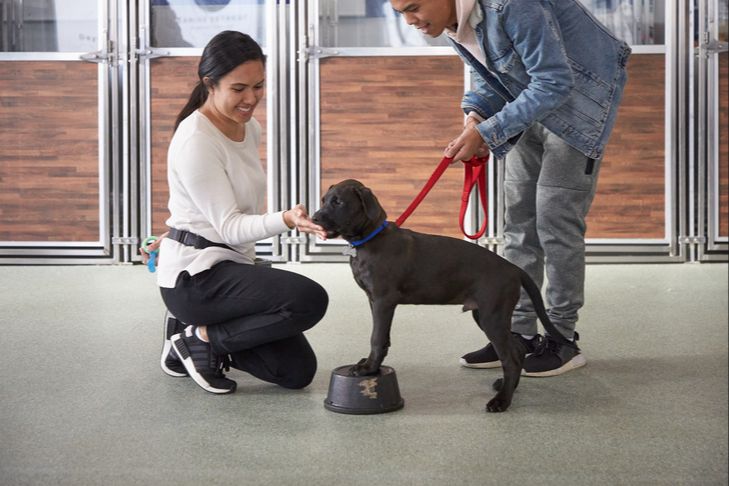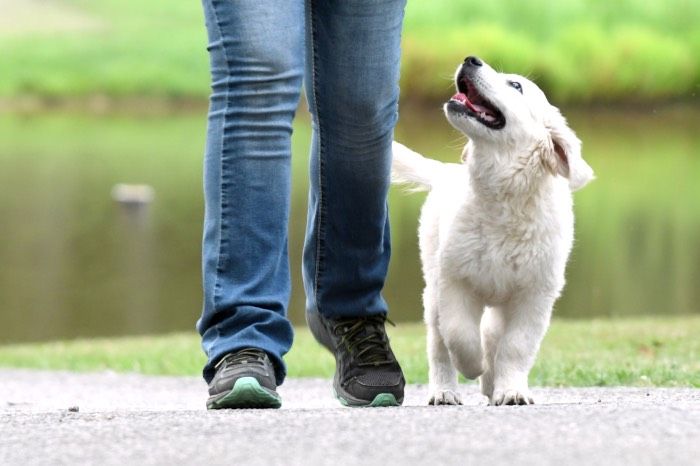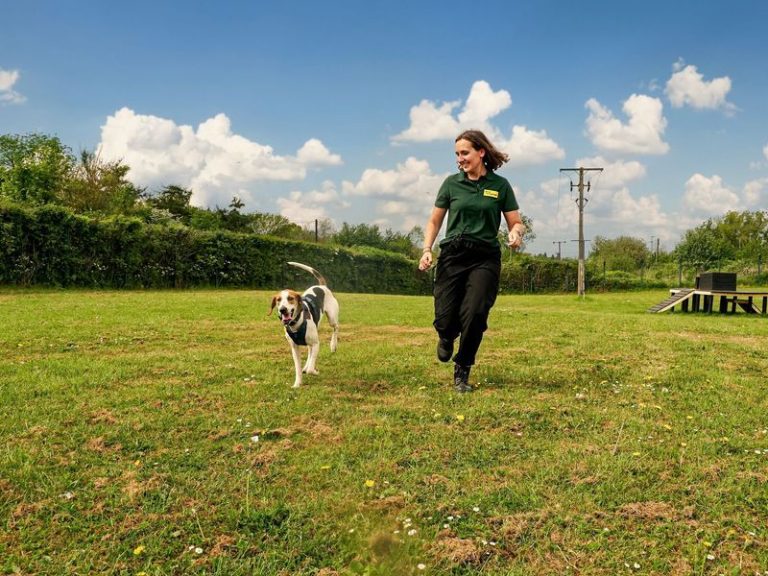Teaching Your Dog To Leave It: Preventing Unwanted Behavior
The “leave it” command teaches your dog to resist the temptation to take an item you don’t want them to have. It’s one of the most important skills you can teach your dog, as it gives you control over their behavior around tempting objects like food scraps, toys, trash, and other items they shouldn’t have.
A solid “leave it” skill provides many benefits:
- Prevents your dog from eating harmful or dangerous objects
- Allows you to redirect their attention during walks or training
- Gives you a way to stop undesirable behaviors like jumping, nipping, etc.
- Strengthens impulse control
- Makes your dog more obedient in distracting environments
Teaching “leave it” establishes you as the leader and helps your dog understand that you decide what they can and cannot have. With patience and positive reinforcement, it is one of the easiest and most valuable skills you can instill in your canine companion.
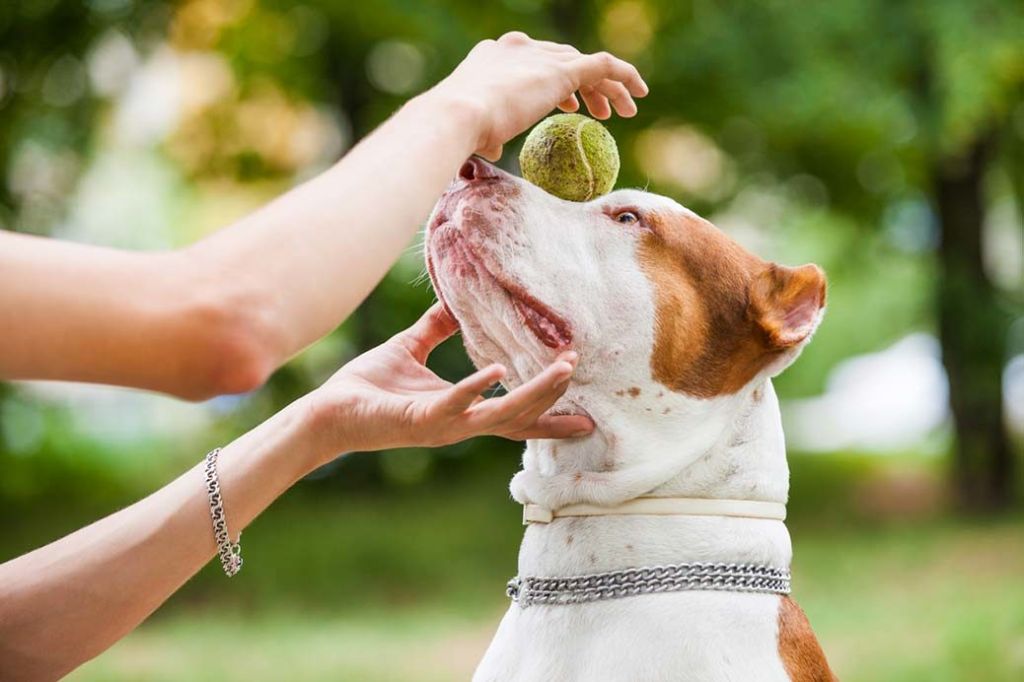
When to Start Training
Typically, you can start training your puppy as young as 8 weeks old, though it’s important to keep training sessions short at this age. Puppies have very short attention spans and can only handle 5-10 minutes of training at a time initially (1). Some key things to remember when training 8 week old puppies:
- Keep sessions under 10 minutes
- Use lots of praise, treats, and play as rewards
- End on a positive note if your pup gets distracted or frustrated
- Keep it fun with variety – mix up locations, commands, rewards
Starting early allows you to instill good behaviors before bad habits develop. But go at your pup’s pace and keep it positive. With short, engaging sessions, you’ll set the foundation for lifelong learning.
Choosing Rewards
One of the most important aspects of teaching the “leave it” command is using rewards that are highly motivating and engaging for your dog. According to the AKC, you’ll want to use your puppy or dog’s absolute favorite treats when first starting out with leave it training (https://www.akc.org/expert-advice/training/learning-the-leave-it-command/). This could be small pieces of chicken, cheese, hot dogs, or any other high-value reward your dog loves.
The key is to make the reward for leaving an item alone better than the temptation to grab or eat the item. This makes your treat the more desirable choice for your dog when you give the leave it cue. Over time, as your dog masters leave it, you can use more moderate-value treats as the reward.
It’s also important to mix up the rewards you use so your dog doesn’t get bored. Rotate different types of treats, praise, and even life rewards like throwing a ball or inviting them on the couch. Variety and novelty will help keep your dog engaged and interested in the leave it training process.
Step-by-Step Training Method
The key to teaching “leave it” is to start small and slowly increase the difficulty. Begin by holding treats in your closed hand. Give the command “leave it” and keep your hand closed until your dog stops trying to get the treats. When they lose interest, open your hand and allow them to eat the treats as a reward.
After repeating this several times, progress to dropping treats on the floor. Say “leave it” immediately and do not allow your dog to eat the treats. When they resist going for the food, reward them by giving a treat from your hand. Over many repetitions, increase the time between giving the command and rewarding.
The next challenges are increasing distance and adding distractions. For example, drop food on the floor while your dog is a few feet away, give the cue, then reward compliance. You can also practice with toys or other tempting items. The key is to slowly raise criteria rather than expect a perfect “leave it” right away. With enough positive reinforcement, your dog will learn to resist their urges.
For more details on shaping this behavior through incremental steps, see this step-by-step guide: “Leave It” Command: Training Your Dog to Ignore Food & Toys
Troubleshooting Common Issues
When training “leave it,” some common issues that may arise include the dog not being motivated by treats, getting too excited or frustrated, or losing focus quickly. Here are some tips for troubleshooting these problems:
If your dog doesn’t seem interested in treats during training, try a higher value reward like small pieces of chicken, cheese, or hot dog. You can also use a favorite toy as a reward. Just be sure to remove it after a few seconds so your dog remains motivated to keep working for it. According to the AKC, switching up rewards keeps training sessions interesting for your dog [1].
Overexcitement and frustration can derail a training session. If your dog gets too amped up, take a break to let them calm down. Work in short sessions of just a few repetitions at first to prevent information overload. You can also ask for an easier behavior like “sit” during the session to help refocus your dog’s attention according to Rover [2].
To build your dog’s focus and impulse control, work on “leave it” in distraction-free environments first. Gradually add more distractions as your dog masters the cue. Staying under threshold will help your dog learn to tune out temptation and keep their attention on you.
Proofing the Behavior
Once your dog understands the “leave it” command, it’s crucial to practice it in many different scenarios with distractions in order to fully proof the behavior. Dogs thrive on consistency, so reinforcing “leave it” often will help solidify your training.
Start with low-level distractions in a quiet setting first, like treats on the floor or a toy on a table. Gradually up the challenge by practicing near windows, in the yard, on walks, at the park, etc. You want your dog to obey “leave it” no matter the environment.
Be sure to continue rewarding your dog with treats and praise when they successfully leave tempting items alone. With enough positive reinforcement, they will learn that ignoring distractions and listening to your “leave it” cue leads to rewards.
According to dog training experts, you should practice “leave it” multiple times a day in all sorts of scenarios. Test it around food, toys, other animals, people, loud noises – whatever might trigger your dog’s impulses. The more you reinforce it, the better your dog will understand and respond when you give the “leave it” command. Consistent training leads to a reliable behavior.
For example, the American Kennel Club recommends starting inside your home and yard, then slowly increasing distraction levels. Take your dog to a park and practice with whatever triggers their impulses there. Or enlist a friend to assist – have them offer treats while you tell your dog “leave it.”
Using Leave It for Unwanted Behaviors
Once your dog understands the “leave it” command, you can use it to help curb unwanted behaviors like sniffing, jumping, nipping, begging, and chewing. The key is to issue the command as soon as you notice the unwanted behavior starting. Be ready with rewards when your dog successfully stops the behavior.
For example, if your dog jumps up when greeting people, have guests issue a firm “leave it” when they see the dog start to jump. Reward with treats and praise when the dog sits or stands instead. For nipping or play biting, say “leave it” and redirect to a toy for chewing. The more consistent you are, the faster your dog will learn that these behaviors earn no rewards.
Leave it can also prevent destructive chewing of household items. Say the command when you notice chewing starting, then redirect to an appropriate chew toy. You may need to initially keep tempting items out of reach while training this behavior.
With patience and practice, “leave it” becomes an invaluable command for bringing an end to unwanted dog behaviors. According to experts at Whole Dog Journal, stopping unwanted behavior is a process that requires reevaluation and effort. But teaching leave it provides a clear way to communicate expectations to your dog (Whole Dog Journal, 2022).
Duration of Leave It
When first teaching the leave it command, you will reward the dog quickly after they ignore the item. However, it’s important to gradually build up the duration that the dog must leave the item before getting their reward. This teaches the dog impulse control and to wait for your release command.
Start by waiting just a couple seconds before rewarding leave it. Over multiple training sessions, slowly increase the duration to 5, 10, 20+ seconds before rewarding. You can also increase distance – start close to the item, then over time increase distance between dog and item. The goal is to work up to the dog ignoring tempting items for an extended duration even if you walk away.[1]
The key is going slowly to avoid frustration. If the dog breaks the leave, just start again at an easier duration. With consistent training, the dog will learn to wait patiently for the release cue, even if they must leave something tempting for a long time. This develops their self-control and makes leave it extremely useful for preventing unwanted behavior with things like food, toys, and other dogs.
Common Mistakes
When teaching the “leave it” command, it’s easy to make mistakes that can set back your training. Here are some of the most common errors:
Progressing too quickly – It’s tempting to speed through training, but dogs need time and repetition to truly learn behaviors. Move slowly through each step of leave it training, ensuring your dog has mastered one element before moving to the next. Rushing ahead may undo previous progress.
Not rewarding enough – Generous rewards are vital for reinforcing leave it. Don’t skimp on treats, praise, or playtime. Make sure you reward every time your dog successfully leaves an item alone. Inconsistent rewards can confuse your dog.
Inconsistent cues – Using different verbal and physical cues for leave it can muddy your training. Stick to the same simple, distinct cue each time like “leave it” or “off.” Your tone and body language should also stay consistent.
Conclusion
In conclusion, teaching your dog the “leave it” command is an essential skill that will help prevent unwanted behavior. By starting training early, using high-value rewards, and employing a step-by-step training method, you can teach your dog this important command.
As recapped throughout this guide, the “leave it” cue helps reinforce impulse control and establishes you as the leader who decides what items are off-limits. With continued proofing and practice, the behavior will become second nature to your dog.
While training “leave it” takes consistency and patience, the long-term payoffs are immense. Your dog will be safer, better behaved, and more focused during walks and in other environments. Additionally, the “leave it” skill builds mutual trust and understanding.
For those seeking additional resources, check out these online guides from AKC and Rover: https://www.akc.org/expert-advice/training/learning-the-leave-it-command/, https://www.rover.com/blog/teaching-your-dog-a-super-strength-leave-it-command/. With continued practice, “leave it” can make a huge difference in your dog’s behavior.

